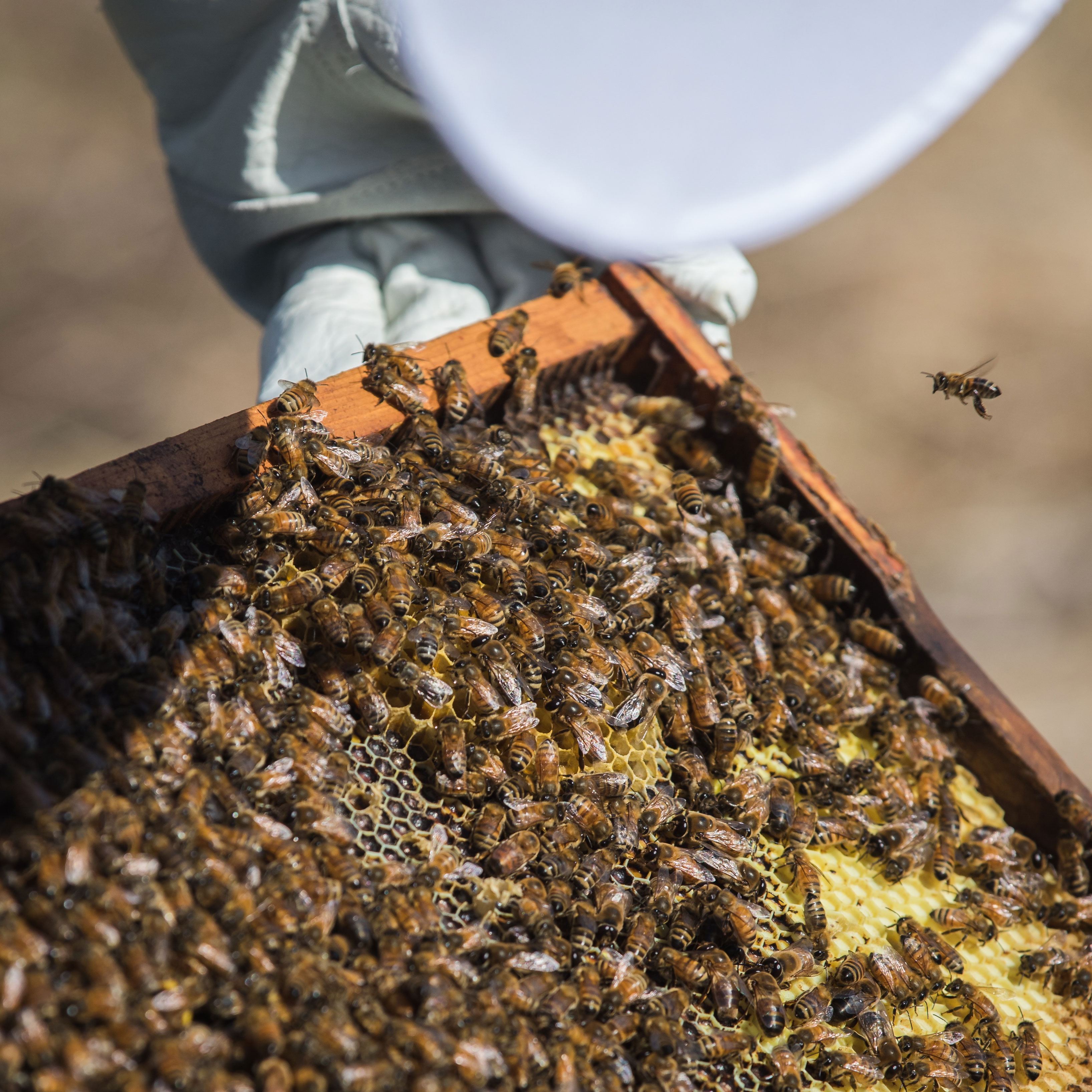Bees … so tiny, yet so vital to humankind! A whopping one third of the world’s food production depends on these powerful pollinators. But their survival is precarious — more than half of North America’s 4,000 native bee species are in decline, with one in four species at risk of extinction.
Lehigh University has a student club that makes bees and environmental sustainability its business. The Beekeeping Club raises awareness — and honeybees — maintaining a hive right on the Lehigh campus.
Outgoing president Will Hollier ’23, finance and history, and incoming president Marina Falzone ’26, mechanical engineering and finance, have been working together this year to rebuild the club, which took a big hit in membership during COVID.
A Science and an Art
“We’re a hands-on educational club. We teach students how to beekeep, how much fun it can be, and how important it is to the environment,” Hollier said. “I didn’t know how to beekeep until I got to Lehigh and joined the club. It’s definitely an art.”
Some hands-on science is also involved, maintaining the hive and making sure the bees are healthy. The club purchased 10,000 bees this spring, bringing the hive’s total to around 20,000. “An average hive has a lot more than that, so we’re growing,” Hollier said.
Powerful Pollinators
Previously on the Mountaintop Campus, the hive’s current location in the Lehigh Community Garden on Goodman Campus is a more sustainable home. “The gardeners definitely appreciate the fact that there are pollinators right there — and we appreciate that it’s an organic garden and they don’t use pesticides, which are very harmful to the bees,” Hollier said.
Liquid Gold
The club, founded in 2014, does sell honey as a fundraiser when production is high, but they try to leave as much as possible while the hive is growing as food for the bees. Club members get a free jar, too!
You Can Help Bees Thrive
“People need to know that there’s something they can do to contribute to helping bees,” Falzone said. “Even if you don’t want to work with a hive, you can educate yourself, maybe don’t put pesticides on your lawn or be careful with the products that you do use. We need to be mindful of the fact that these creatures are more fragile because of us, and so now it’s our job to protect them.”
 The Buzz About Bees
The Buzz About Bees
The Sweet Stuff
A single bee produces just one tablespoon of honey in its lifetime.
Climate Control
Bees cool or heat their hive to a balmy 93 to 95 degrees year-round by beating their wings … like revving an engine in neutral.
One and Done
Worker and drone honeybees can only sting once, then they die. Queen bees — who live for about two years — can sting multiple times, but they usually reserve their stings for rival queens.
Creating a Colony
A queen bee can lay up to 3,000 in a day — both fertilized and unfertilized eggs. Unfertilized eggs become male drones; new queens or worker bees come from fertilized eggs. Future queens are fed royal jelly rather than honey or pollen, which helps them develop ovaries and reproductive ability.
The Queen is in a Mood
All the bees in a colony take their cues from the queen, who controls the mood of the hive and unifies her subjects with a special pheromone.
We’re Outta Here!
If a hive gets overpopulated, the queen will take some of the drones and look for another home — that’s what is going on if you see a swarm. A new, more youthful queen takes over the old hive.